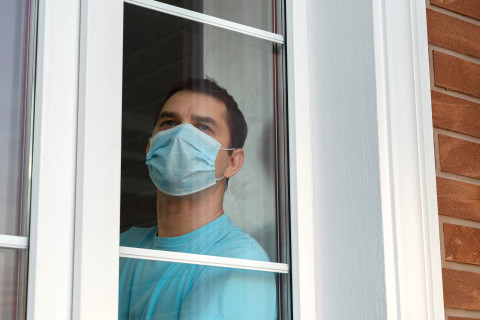A new study analysing the link between people’s reduced movement and the spread of coronavirus in 2020 shows that in some countries, the virus spread more rapidly when people stayed at home. In addition, restricting people’s mobility to some extent appeared, retrospectively, to be better at minimising the spread of SARS-CoV-2 than extreme mobility restrictions, in many countries.
“Over two years mark the start of the pandemic which changed the lives of many of us in various ways. The current development of the SARS-CoV-2 spread suggests that this chapter of history entitled COVID-19 might, hopefully, be fading to its end. There is, however, still a lot to learn about it. Reflecting on how we have reacted to the pandemic could help us draw useful lessons on how to minimize the damage of similar challenges, especially now that infectious diseases appear to be a re-emerging threat,” researchers Mounir Ould Setti and Sylvain Tollis point out.
Government-imposed lockdowns and movement restrictions were likely the hallmark of the response to this pandemic. These interventions were found invasive in some circumstances and settings. Were lockdowns and movement restrictions efficient in reducing SARS-CoV-2 spread? The researchers from the University of Eastern Finland analysed how the movement of people aligned with daily changes of the effective replication number of SARS-CoV-2. The effective replication number reflects the rate of spread of the disease as it captures dynamic changes in person-to-person viral transmission. The mobility indicators are based on anonymised position data from users of Google services who have Location History activated on their mobile phones. The positions are classified into different mobility categories, including, for example, residential mobility, which indicates that people are staying at home. The researchers focused on the pre-vaccination and pre-variants-of-concern phase of the pandemic from February 15 to December 31, 2020 analysing daily changes of mobility and SARS-CoV-2 spread in 125 countries and 52 United States regions or states.
The analysis identified three groups of countries based on patterns of correlations between the mobility indicators and the effective reproduction number of SARS-CoV-2. Group 1 consisted of countries with “normal” correlations, in other words negative correlations between residential mobility and SARS-CoV-2 spread, e.g. the United States, Turkey, and most OECD countries. Group 2 included countries with “inverted” correlations, referring to positive correlations between residential mobility and SARS-CoV-2 spread. Group 3 consisted of countries with more complex correlation patterns, or “inconclusive” correlations.
In group 1 countries such as Austria, the more time people spent at home, the less disease spread was recorded, while in group 2 countries such as Bolivia, the exact opposite was observed: the more time people spent at home, the more disease was spreading. In addition, in many countries, the patterns of correlation between mobility and disease spread displayed a minimum of disease spread at an intermediate level of mobility restriction (“U-shaped” correlations), indicating an optimal level above which restricting people’s mobility could lead to more disease spread. In other words, complete lockdowns might have been counterproductive at certain levels and in some countries.
The authors concluded that a systematic analysis of correlations between mobility and disease spread at a regional level could help understand the optimal level of mobility restriction that minimizes the spread of SARS-CoV-2 in that specific region.
For further information, please contact:
Mounir Ould Setti, MD, MSc, Institute of Public Health and Clinical Nutrition, University of Eastern Finland, mounir.ould.setti (a) uef.fi, tel. +358 417516085
Sylvain Tollis, PhD, Institute of Biomedicine, University of Eastern Finland, sylvain.tollis (a) uef.fi, +358 503419874
Research article: In-depth Correlation Analysis of SARS-CoV-2 Effective Reproduction Number and Mobility Patterns: Three Groups of Countries. J Prev Med Public Health. 2022;55 (2): 134-143. Published online 10 Feb 2022. https://www.jpmph.org/journal/view.php?doi=10.3961/jpmph.21.522



